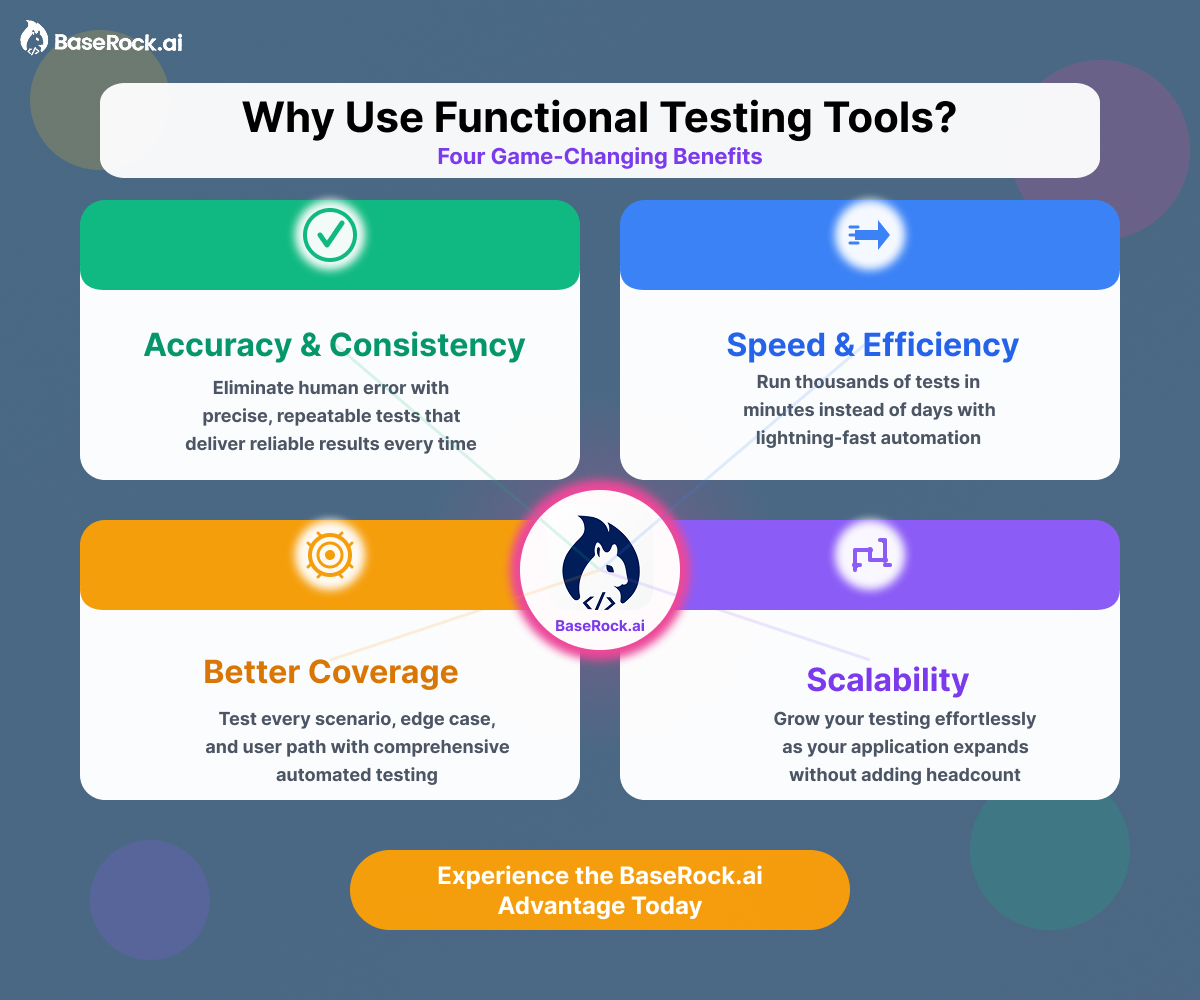.png)
In today’s fast-paced software development world, delivering reliable, bug-free applications is non-negotiable. As organizations adopt agile, CI/CD pipelines, and DevOps practices, the pressure on quality assurance (QA) teams intensifies. Functional testing plays a pivotal role — it ensures that software behaves exactly as intended by validating each feature against specified requirements.
However, manual functional testing alone can’t keep up with frequent releases and complex use cases. That’s where functional testing tools and automation step in — enabling faster, more reliable, and more scalable quality assurance. In this guide, we’ll walk you through what functional testing tools are, why they’re essential, top tools in the market, and how Baserock helps you supercharge your functional testing efforts.
Functional testing tools are software applications or frameworks designed to help QA teams automate or assist in verifying the functional behavior of an application. Their purpose is to validate that features behave according to requirements — across user flows, input validations, data handling, UI interactions, APIs, and more.
Key characteristics:
In other words, functional testing tools help ensure features work as intended — reducing manual effort, minimizing human error, and enabling continuous validation throughout the development lifecycle.
Below is a curated list of some of the most popular and capable functional testing tools, along with their standout features and ideal use cases. (Note: some are open source, others commercial or hybrid.)

These tools represent a mix of approaches: code-first frameworks (Selenium, Playwright), low-code or codeless platforms (BugBug, Katalon), model-driven or record-and-play tools (Tosca, UFT). The right choice depends on your team’s skillset, application stack, budget, and testing requirements.
Here are the key reasons organizations adopt functional testing tools:

Automated functional testing takes the benefits above even further. Here’s why automation is critical in modern software development:
Here’s how Baserock fits into this landscape and helps your team achieve robust, scalable functional testing automation:

By offering all these capabilities, Baserock acts as a central hub for your functional test automation — reducing maintenance burden, accelerating coverage, and helping your team get dependable, rapid feedback.
Functional testing tools are indispensable in modern software development. They empower QA teams to validate application behavior reliably, repeatedly, and at scale. Automating functional testing isn’t just a nice-to-have — it’s essential for delivering high quality in fast release cycles.
With Baserock, your team gains a powerful solution to streamline functional test automation, reduce maintenance overhead, and embed testing deeply into your development pipelines. The result? Faster releases, fewer regressions, and greater confidence in your software quality.
Q: What are the best free functional testing tools?
A: Some widely used free/open-source functional testing tools include Selenium, Cypress, Playwright, and Appium. These provide solid foundations and are supported by large communities.
Q: Which functional testing tool is best for beginners?
A: Tools with low-code or codeless interfaces (such as Katalon, Baserock) tend to be more beginner-friendly. They allow you to record or visually create tests without writing elaborate scripts.
Q: Can functional testing tools replace manual testing?
A: Not entirely. While functional testing tools are excellent for regression, repetitive, and high-volume tests, manual testing remains valuable for exploratory, usability, and ad-hoc scenarios.
Q: Which tools are best for mobile app testing?
A: For mobile, Appium is a popular open-source option. Commercial tools like TestComplete and Squish also support mobile app functional testing with robust UI and cross-platform coverage.
Flexible deployment - Self hosted or on BaseRock Cloud